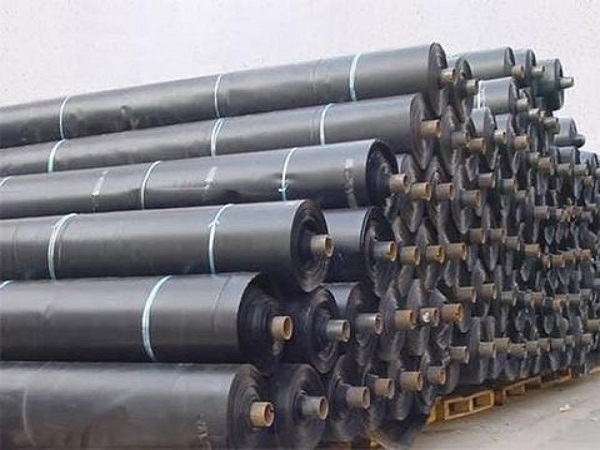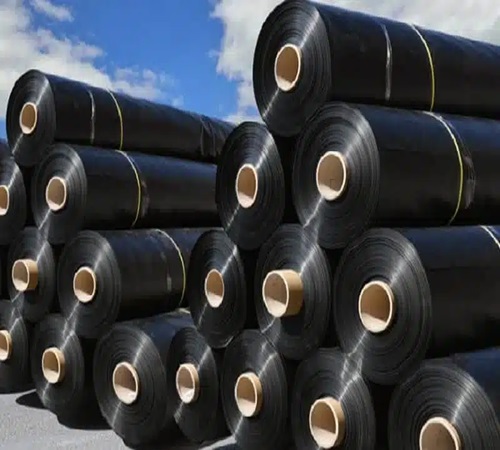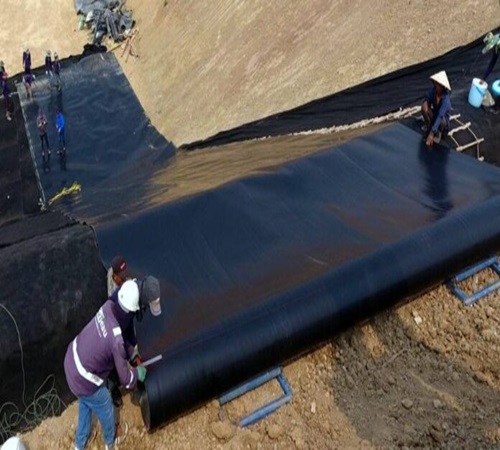
HDPE Geomembrane: A Superior Solution for Aquaculture
HDPE Geomembrane is a high-performance material widely used in various construction applications, including aquaculture. It is also known as HDPE Liner and offers numerous advantages over traditional pond construction methods.
Composition
- HDPE geomembrane is primarily composed of high-molecular-weight polyethylene (PE) resin, accounting for 97.5% of its composition.
- The remaining 2.5% consists of activated carbon and antioxidants to enhance its resistance to UV radiation and chemical degradation.
- The PE resin is formed through the copolymerization of ethylene (C2H4) molecules under controlled temperature, pressure, and catalysts, in a process known as polymerization.
- Ethylene gas is obtained from the cracking of crude oil.
Key Features
- Excellent impermeability: HDPE geomembrane provides a highly effective barrier against water infiltration and loss, preventing contamination of surrounding soil and groundwater.
- High durability: It exhibits exceptional resistance to UV radiation, chemicals, and biological degradation, ensuring a long service life even in harsh environments.
- Superior strength: HDPE geomembrane has high tensile and puncture strength, making it resistant to mechanical damage.
- Flexibility: It is available in various thicknesses and can be easily tailored to specific pond requirements, including irregular shapes and slopes.
- Ease of installation: HDPE geomembrane can be installed quickly and efficiently using specialized welding techniques, creating a seamless and watertight barrier.
Applications in Aquaculture
- Lining shrimp and fish ponds: HDPE geomembrane is ideal for constructing ponds on sandy or unstable soils, preventing water loss and seepage.
- Rehabilitation of old ponds: It can be used to renovate existing ponds that suffer from problems like water loss, poor water quality, or contamination.
- Construction of intensive aquaculture systems: HDPE geomembrane is a critical component in intensive aquaculture systems, where precise control of water quality and environment is crucial.
Benefits of Using HDPE Geomembrane in Aquaculture
- Water conservation: By preventing water loss through seepage, HDPE geomembrane helps conserve water, reducing pumping costs and minimizing environmental impact.
- Improved water quality: It prevents the ingress of pollutants and contaminants from the surrounding soil, maintaining optimum water quality for fish and shrimp health.
- Increased productivity: By providing a controlled and stable environment, HDPE geomembrane helps increase fish and shrimp growth rates and yields.
- Reduced disease risk: The impermeable barrier prevents the spread of pathogens and parasites, reducing disease outbreaks and improving overall health.
- Efficient waste management: HDPE geomembrane facilitates the collection and removal of waste, promoting a cleaner and more hygienic aquaculture system.
- Enhanced durability: With its exceptional resistance to UV radiation and chemicals, HDPE geomembrane offers a long service life, reducing maintenance costs and downtime.
- Cost-effectiveness: Despite the initial investment, HDPE geomembrane provides significant long-term benefits through water conservation, improved productivity, and reduced maintenance costs.
HDPE geomembrane represents a superior solution for aquaculture, offering numerous advantages over traditional pond construction methods. By promoting water conservation, improving water quality, and increasing productivity, it can significantly enhance the sustainability and profitability of aquaculture operations.





